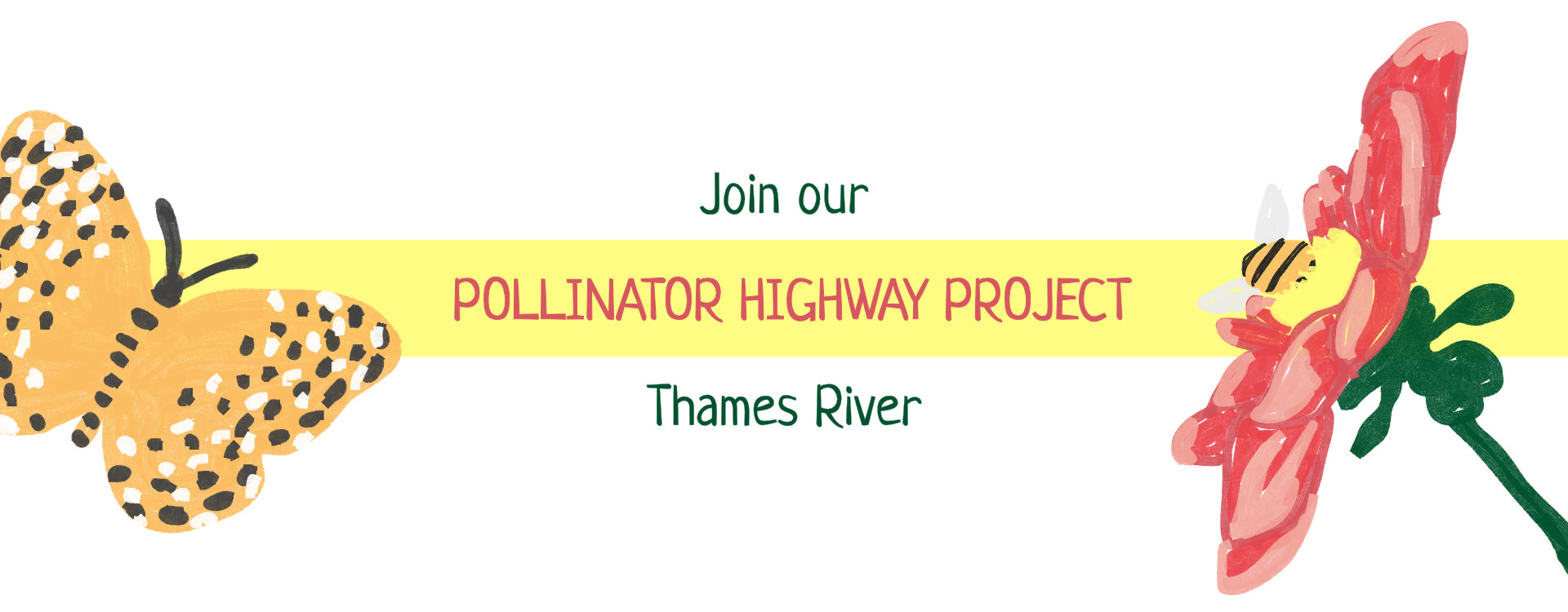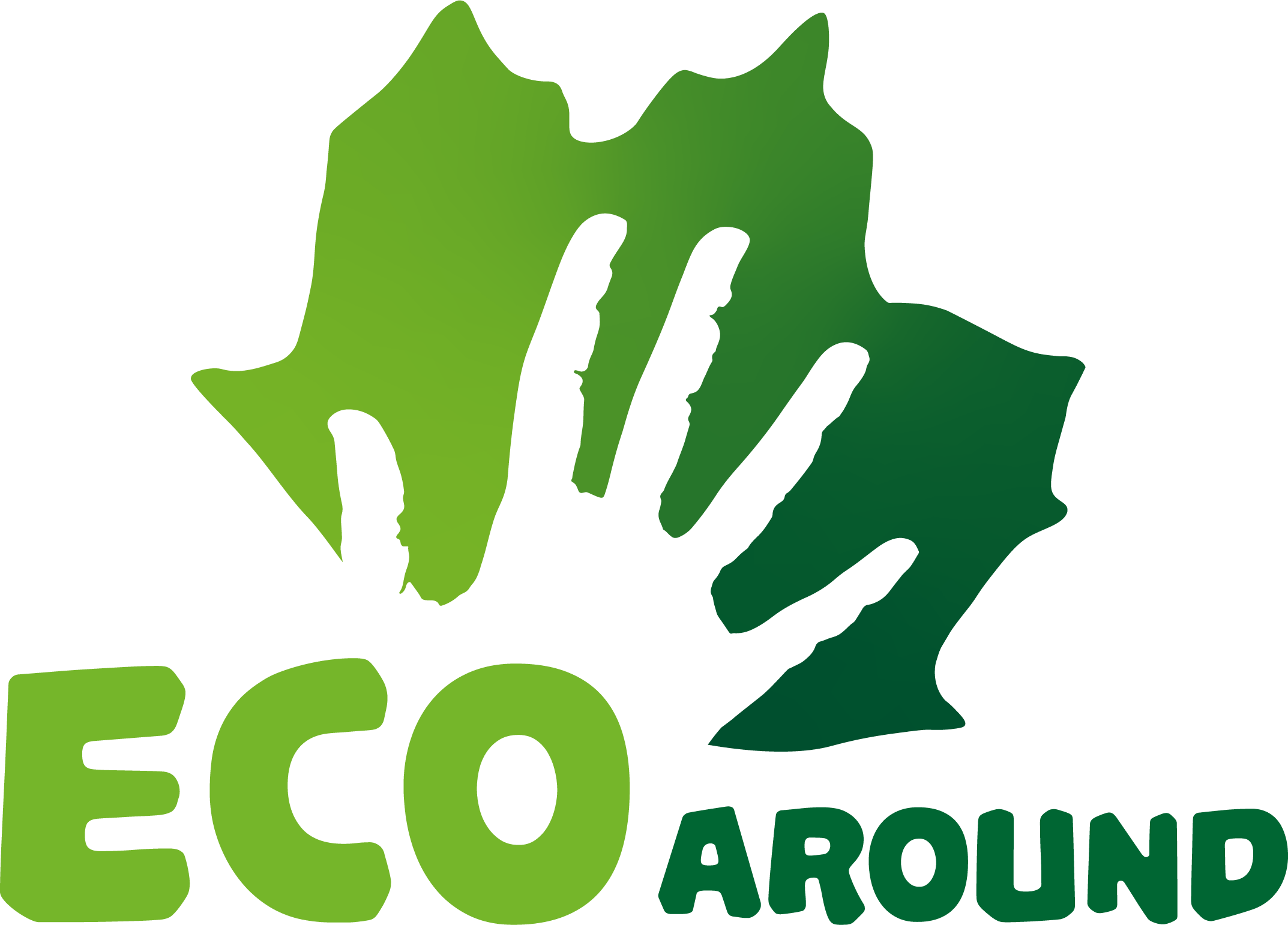
The objective?
To create a super wildflower highway to connect pollinators along the whole River Thames.
Our natural environment relies heavily on different species of insects to help pollinate flowers, shrubs, trees and plants, without these incredible insects the whole ecosystem will collapse, causing irreparable damage. There are thousands of pollinating insects, such as beetles, wasps, moths and of course bees.
Did you know that Britain has lost up to 97% of its natural meadows that harbour important wildflower species. The insects that pollinate these wildflowers are also in decline and we could see them fall by as much as 70% in the near future!
We must act now if we are to save our ecosystem from future collapse and you can start in your very own garden!
It doesn’t take a lot to make your little plot of green a vital refuge for our invertebrate friends. Think of your space as a pit stop for insects.
How can you help?
We have approached you because your property sits along the super Wildflower Highway that we are creating. Pockets of the right plant life in our towns, cities and villages can be used by insects as they navigate our built environments. The good news is that gardening for insects is one of those activities in which less really is more.
The best thing you can do is not very much. Here’s an outline of the things you can do to help. All can be done without any special skills and none of them will take much time or effort. Follow our simple points in this page.
Segregating a small patch of your garden
You can help support many different species of pollinating insects by devoting a small part of your garden to native Wildflowers only. Not only will you be doing your bit but you will also be able to marvel at the beautiful colours and shapes when they blossom in the Spring. Our native flowers have specific pollen that insects thrive off. These insects cannot get it from non-native species, so it is important to stick to native flowers and trees.
Simply sprinkle a packet of NATIVE wildflower seeds in autumn or early spring. Scatter on bare earth (weed free/unimproved soil) in full sun and water lightly. Do not add compost and remove any grass cuttings or turn over the grass as they compete with wildflowers. Remember to buy only Native Wildflowers specific to your county. Even better, look at what wildflowers exist around your property and buy only those species! This will greatly enhance what is already there.
A tree can be a great addition to a garden, again plant only native ones like the small Hawthorn, Blackthorn and Goat Willow trees. If you have a big garden you could go for bigger species. Native fruiting trees like apple and pear trees are also a great addition to helping the ecosystem.
Giving up those nasty pesticides. Pest control!
Pesticides do more harm than good! Not only do they contaminate other flowers, but they destroy important and rare native wildflowers and insects. These insects die and don’t pollinate other wildflowers, which creates a domino effect on the whole ecosystem.
Pesticides also run off into the rivers, streams and oceans where they have a hugely adverse effect on marine life and human life as they get into the food and water systems. They also contaminate the area for hundreds if not thousands of years.
Things to consider if you have insect invaders:
• If they’re not causing any harm, leave them alone. It will save a lot of invertebrate lives as well as time and money!
• Let nature take care of pest problems. A predator species will do the work for you.– Aphid-munching ladybirds and lacewings,– Slug-hunting predators,– Worker wasps are great hunters of caterpillars,– Solitary wasps are predators of various insects.
• Strongly-scented plants like Marigolds, Sage or Lavender near vegetables/flowers can deter insects. Smelly nasturtiums also keeps butterflies away from cabbages.
• Create a polythene barrier around carrots to keep out the carrot fly and slugs. Or grow important plants in a greenhouse.
• Remember that it is the natural course of life for insects to feed on plant life.
• You can use natural methods to control pests and weeds, rather than using pesticides and herbicides.
Reduce your impact on the environment and wildlife:
• Cut down on your water use. – Water plants in the evening when less moisture will evaporate,– Get a water butt to harness rainwater for your garden.
• Choose native plants. Non-native or invasive species outcompete bug-friendly plants.
• Ditch the peat. Peat is harvested unsustainably and deprives insects of habitat. Try to instead leave the Earth the way it has been for millions of years, natural is always better.
• Leave the limestone; which is a habitat for invertebrates.
Native Plants Found on the Freshwater Thames and its Tributaries
Common Name | Scientific Name | ||
Submerged and Floating Plants | |||
Fennel pondweed | Potamogeton pectinatus | ||
Floating sweet-grass | Glyceria fluitans | ||
Rigid hornwort | Ceratophyllum demersum | ||
Small pondweed | Potamogeton berchtoldii | ||
Spiked water-milfoil | Myriophyllum spicatum | ||
Stream water-crowfoot | Ranunculus penicillatus | ||
Unbranched bur-reed | Sparganium emersum | ||
Water starworts | Callitriche spp. | ||
Yellow water-lily | Nuphar lutea | ||
| |||
Marginal and Bank Plants | |||
Amphibious bistort | Persicaria amphibia | ||
Arrowhead | Sagittaria sagittifolia | ||
Blue water-speedwell | Veronica anagallis-aquatica | ||
Branched bur-reed | Sparganium erectum | ||
Brooklime | Veronica beccabunga | ||
Common club-rush | Schoenoplectus lacustris | ||
Common reed | Phragmites australis | ||
Common reedmace (Bulrush) | Typha latifolia | ||
Compact rush | Juncus conglomeratus | ||
Flowering rush | Butomus umbellatus | ||
Fool’s water-cress | Apium nodiflorum | ||
Great (hairy) willowherb | Epilobium hirsutum | ||
Great yellow-cress | Rorippa amphibia | ||
Gypsywort | Lycopus europaeus | ||
Greater pond-sedge | Carex riparia | ||
Hemlock water-dropwort | Oenanthe crocata | ||
Hemp-agrimony | Eupatorium cannabinum | ||
Lesser pond-sedge | Carex acutiformis | ||
Lesser water-parsnip | Berula erecta | ||
Marsh bedstraw | Galium palustre | ||
Marsh fox-tail | Alopecurus geniculatus | ||
Marsh woundwort | Stachys palustris | ||
Meadowsweet | Filipendula ulmaria | ||
Pendulous sedge | Carex pendula | ||
Plicate sweet-grass | Glyceria notata | ||
Purple-loosestrife | Lythrum salicaria | ||
Reed canary-grass | Phalaris arundinacea | ||
Reed sweet-grass | Glyceria maxima | ||
Slender tufted-sedge | Carex acuta | ||
Water-cress | Rorippa nasturtium-aquaticum | ||
Water dock | Rumex hydrolapathum | ||
Water figwort | Scrophularia auriculata | ||
Water forget-me-not | Myosotis scorpioides | ||
Water mint | Mentha aquatica | ||
Water-plantain (common) | Alisma plantago-aquatica | ||
Yellow iris (Flag iris) | Iris pseudacorus | ||
Tree & Shrub Species | |||
Alder | Alnus glutinosa | ||
Ash | Fraxinus excelsior | ||
Blackthorn | Prunus spinosa | ||
Crack willow | Salix fragilis | ||
Dogwood | Thelycrania (Cornus) sanguinea | ||
Elder | Sambucus nigra | ||
Field maple | Acer campestre | ||
Goat willow | Salix caprea | ||
Grey willow | Salix cinerea | ||
Hawthorn | Crataegus monogyna | ||
Osier | Salix viminalis | ||
Pendunculate oak | Quercus robur | ||
Spindle | Euonymus europaeus | ||
White willow | Salix alba | ||
| Ulmus glabra | ||
Please note that all plants in planting plans should be true native species and not cultivars.
Important facts
There are over 1600 different species of Wildflowers in Britain.
97% of wildflower meadows have declined since the 1930’s.
All native plants and insects are incredibly important to the success of the British ecosystem.
One in three mouthfuls of food we eat only exists because of pollinators. Bees pollinate crops from tomatoes to strawberries.
Almost 90% of the world’s wild plants depend on pollinators, along with 75% of leading global crops.
SPREAD THE WORD!
How far away from the Thames River can we encourage people to act and save our precious and fragile ecosystem depends on you! Let’s all get together and combat this problem before it’s too late. Get out there and plant native wildflowers and trees. There’s nothing more rewarding than the feeling of contributing to something important. Try and create mini meadows in as many places as you can. Collectively we can all improve the ecology of the Thames River and surrounding areas and create a pollinator highway saving many different species of Britain’s wildlife and flora.
